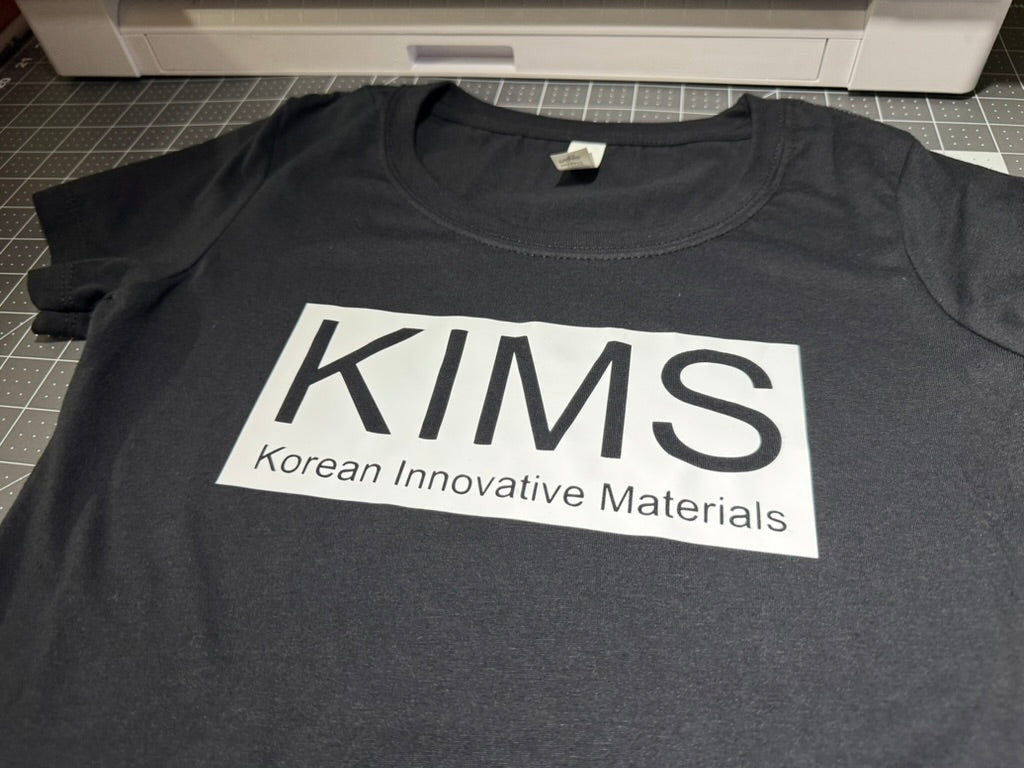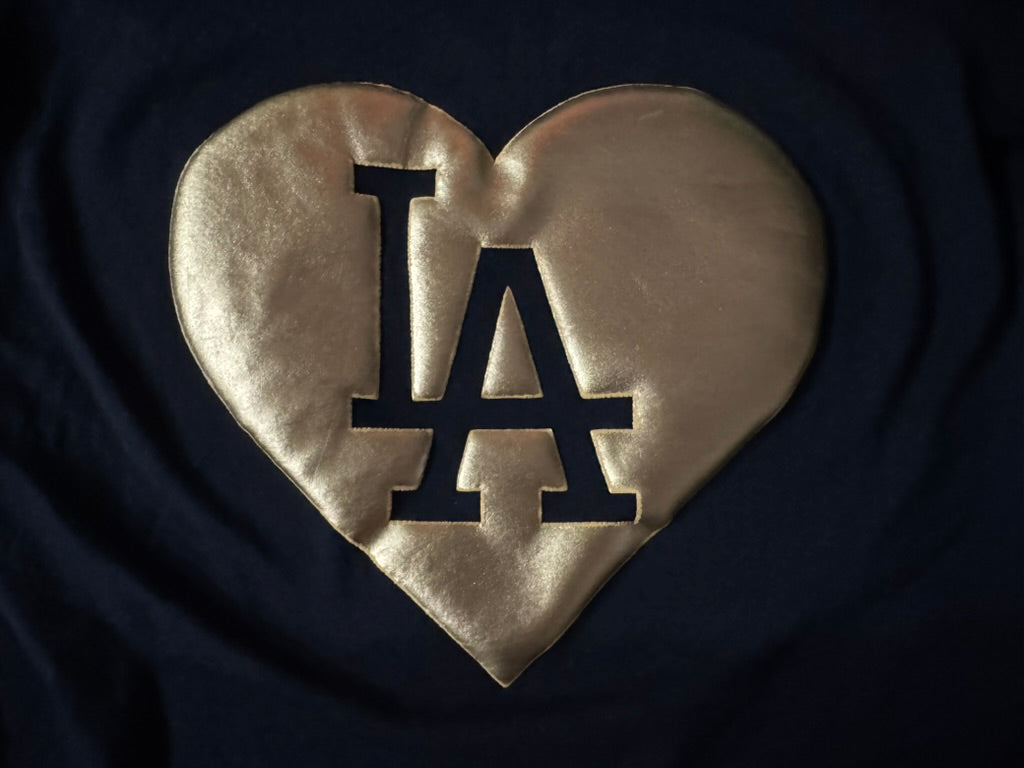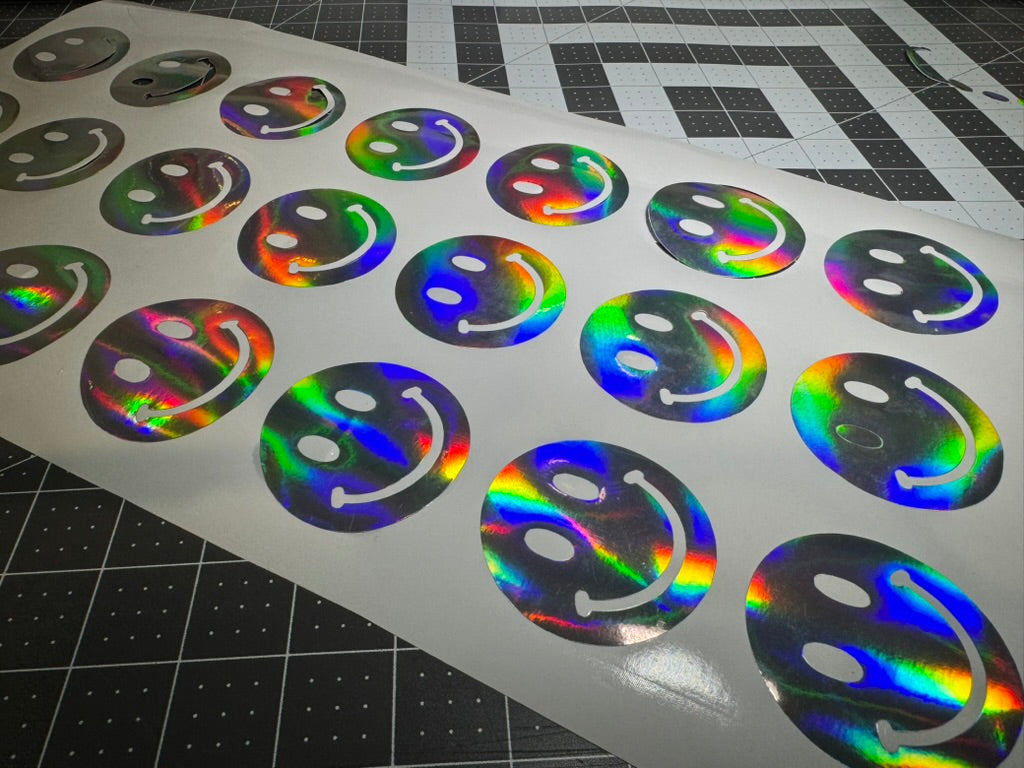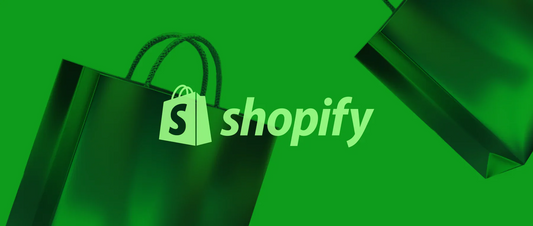Introduction
Heat transfer vinyl (HTV) is used to apply designs onto fabric using heat and pressure. It's a key material in custom apparel, promotional products, and personalized gifts. HTV comes in various colors, finishes, and thicknesses, and works on cotton, polyester, blends, and other textiles.
Not all heat transfer vinyl performs the same way. Some options work well for basic crafting, while others are engineered for professional use. The differences between these types aren't always visible at first but affect how a finished product looks and performs over time.
When selecting HTV, the quality of the material plays a central role in the final result. Understanding what separates high quality heat transfer vinyl from lower-grade options helps ensure more consistent and reliable outcomes in every project.
Why Quality Matters in HTV
The quality of heat transfer vinyl influences how well a design holds up after repeated use. High quality vinyl maintains its shape and color through dozens of wash cycles without cracking, peeling, or fading. Lower quality materials may begin to break down after just a few washes, especially if exposed to high temperatures or frequent wear.
Vinyl quality also affects how a finished product looks. Premium HTV lays flat on the fabric, has smoother cut edges, and bonds cleanly without bubbles or wrinkles. These details contribute to a more polished, professional appearance.
Although high quality heat transfer vinyl often costs more initially, it typically results in fewer production errors and less material waste. Over time, it can be more cost-effective than using inexpensive vinyl that fails early.
"Quality vinyl is the foundation of professional-looking custom apparel. It supports accuracy in execution, consistency in application, and durability in everyday use."
Differences Between Standard and Premium Vinyl
|
Feature |
Standard HTV |
Premium HTV |
|---|---|---|
|
Material composition |
Often PVC or basic PU blends |
Advanced PU formulations with special coatings |
|
Thickness |
130–200 microns |
80–130 microns |
|
Adhesive quality |
Basic adhesive |
Commercial-grade adhesive with stronger bond |
|
Durability (washes) |
15–25 washes |
50+ commercial wash cycles |
|
Ease of cutting/weeding |
Moderate; can tear during fine cuts |
High; supports detailed cuts and easy weeding |
|
Price range |
Lower upfront cost |
Higher initial investment |
|
Applications |
Basic hobby use or low-volume production |
Commercial use, retail-ready products |
Standard and premium heat transfer vinyl differ in how they're made and how they perform. Thicker vinyl may be easier to handle but can create a bulky feel on fabric. Thinner, premium vinyl often allows for more detailed designs and a softer finish.
These differences affect which type works better for specific jobs. For example, a bulk order of branded athletic wear might use premium HTV for durability and comfort, while a one-time personal project may use standard HTV where long-term performance isn't as important.
Key Factors for Selecting the Best HTV
When choosing high quality heat transfer vinyl, several factors determine how well it will perform both during production and after application.
Thickness and Flexibility
The thickness of HTV is typically measured in microns. Premium HTV often ranges between 80 to 130 microns (0.08 to 0.13 mm). Thinner vinyl conforms more closely to fabric, resulting in smoother finishes.
Thicker vinyl may sit higher on the fabric and feel more noticeable when touched. For garments like activewear, thinner and more flexible vinyl works better because it moves with the fabric and feels less stiff.
The "hand," or tactile feel, of vinyl also varies. Softer vinyl blends more naturally with the fabric, while firmer vinyl stands out more when worn.
Flexibility Test: Stretch a sample of vinyl along with the fabric. If the vinyl moves without cracking or lifting, it's flexible enough for stretchable garments.
Adhesive Strength for Multiple Washes
Commercial-grade HTV uses adhesives designed to activate at specific heat and pressure levels. These adhesives form a strong bond between the vinyl and fabric once applied.
Activation temperatures typically range from 285°F to 320°F, depending on the vinyl type. Adhesive strength determines whether the design will stay intact after repeated laundering.
The industry standard for durability is 50 or more wash cycles without significant degradation in adhesion or appearance.
Adhesive Quality Check: Look for HTV that bonds evenly across the design and shows no lifting after a wash test at commercial settings.
Ease of Weeding Fine Details
The quality of the carrier sheet affects how easily excess vinyl can be removed after cutting. High-quality carrier sheets hold the design securely but release small cut pieces without tearing.
Material composition also plays a role. Softer PU-based vinyl tends to cut cleaner and weed more easily than stiffer alternatives. Accurate cutting requires consistent vinyl thickness and a smooth surface.
Weeding Indicators:
-
Minimal tearing during weed removal
-
Clear visibility of cut lines
-
Vinyl that lifts cleanly without pulling adjacent pieces
Color and Finish Options
Premium HTV offers consistent color across production batches. This helps when fulfilling repeat orders or producing multiple items in the same design.
Specialty finishes include metallic, glitter, holographic, and reflective materials. Each has different layering rules and temperature requirements.
Popular premium finish types include:
-
Metallic HTV for fashion garments and logos
-
Glitter HTV for dancewear and children's clothing
-
Reflective vinyl for safety apparel and athletic wear
-
Matte and glossy solids for everyday branding
How to Apply Premium HTV for Long Lasting Results
Accurate application ensures premium heat transfer vinyl adheres correctly and maintains performance during repeated use and washing.
Prepare the Design and Cut Settings
Premium HTV typically requires slower cutting speeds and lighter blade pressure than standard vinyl due to its thinner composition. Blade depth depends on the thickness of the vinyl and the sharpness of the blade.
Designs with small text or fine lines may require increased spacing between elements to prevent lifting during weeding or pressing. Some specialty vinyl, such as holographic or puff, may make cut lines harder to see, requiring test cuts and bright lighting.
Cut Setting Guidelines for Popular Machines:
-
Cricut Explore/Maker: Pressure – Medium, Speed – Normal to Slow
-
Silhouette Cameo: Blade – 2–3, Speed – 4–5, Force – 6–8
-
Roland GS-24: Downforce – 80–100 gf, Speed – 10–15 cm/s
Use the Right Temperature and Pressure
Each type of premium HTV activates at a specific temperature range. Heat presses offer more consistent results than household irons because they apply even pressure and maintain set temperatures.
Pressure should be firm and evenly distributed across the design area. Uneven pressure can result in peeling edges or incomplete bonding.
Temperature Guide for Common HTV Types:
-
Standard Premium HTV: 295°F–305°F (145°C–150°C)
-
Glitter Vinyl: 320°F–330°F (160°C–165°C)
-
Reflective Vinyl: 300°F–310°F (149°C–154°C)
Layer Appropriately if Needed
Some premium HTV types support layering, while others don't. Matte and PU-based vinyl can often be layered, but glitter, holographic, and puff types typically work best as top layers only.
When layering, apply the first layer with lower pressure and for a shorter time to prevent over-pressing during subsequent layers. Temperature may need adjusting for each layer to avoid overheating lower layers.
Basic Layering Steps:
-
Apply base color layer for 3–5 seconds at lower pressure
-
Let cool for 10–15 seconds
-
Apply second layer at full temperature and pressure
-
Final press for 10–15 seconds to seal all layers
Follow Proper Peel Instructions
Premium HTV types are designed for either hot peel, warm peel, or cold peel. Peeling at the wrong time can affect edge quality and cause lifting or distortion.
Hot peel vinyl should be peeled immediately after pressing. Cold peel vinyl should be cooled completely before removal. Always peel the carrier sheet back slowly and at a consistent angle.
Peel Timing:
-
Hot Peel: Remove within 2–3 seconds after pressing
-
Warm Peel: Wait 5–10 seconds until vinyl is warm but not cool
-
Cold Peel: Wait until vinyl is cool to the touch (30–60 seconds)
Common Mistakes to Avoid
Even when using high quality heat transfer vinyl, incorrect technique can lead to poor results. These issues often come from skipping key preparation steps or misinterpreting application guidelines.
Skipping Test Cuts
Test cuts help confirm if the blade depth, pressure, and settings work well for the specific vinyl being used. Without this step, cuts may go too deep or not deep enough, causing difficulty during weeding or incomplete transfers.
A test cut involves creating a small shape in an unused corner of the vinyl. The shape is then weeded to check if the vinyl separates cleanly without dragging or tearing the carrier sheet.
Test Cut Checklist:
-
Cut lines are visible but don't cut through the backing
-
Small shapes weed easily without resistance
-
Carrier sheet remains intact with no cuts through it
Over-Pressing or Under-Pressing
Incorrect pressing time or temperature can cause vinyl to fail. Over-pressing can flatten specialty finishes or burn the adhesive, while under-pressing may result in weak bonding and lifting edges.
Different vinyl types require specific press durations based on their thickness and adhesive properties. Thinner vinyl generally presses faster than thick or specialty types.
Signs of Proper Pressing:
-
Even adhesion across the design
-
No bubbling or lifting edges
-
Clean peel lines
-
Vinyl surface maintains its intended finish
Neglecting Fabric Pre-Press
Fabrics often hold moisture and wrinkles that interfere with vinyl adhesion. Pre-pressing removes moisture and flattens the surface before applying the design.
This step also helps identify if the fabric reacts to heat, which can affect the final result. For example, polyester may discolor under high heat, while cotton requires firm pressure to bond properly.
Basic Pre-Press Steps:
-
Set the heat press to the correct temperature
-
Place the garment on the press surface evenly
-
Apply medium pressure for 3–5 seconds
-
Check for steam or moisture release before proceeding
Specialty HTV Finishes and Their Uses
Specialty heat transfer vinyl finishes create visual or textural effects beyond standard solid colors. These finishes are used in custom apparel, accessories, and promotional products to create distinct or functional designs.
Reflective Vinyl
Reflective vinyl contains glass bead or microprism technology that reflects light back toward its source. This reflective effect becomes visible when light, such as headlights or flash, hits the vinyl surface.
This type of vinyl is often used for safety purposes on garments designed for nighttime visibility, such as construction wear, emergency uniforms, and running gear. Some versions meet professional safety standards.
Reflective HTV is usually more rigid than standard vinyl and may require higher pressure during application. Most types resist weather and washing but shouldn't be layered with other HTV finishes.
3D Puff Vinyl
3D Puff vinyl expands when pressed, creating a raised, foam-like appearance that gives the design a dimensional texture. Puff vinyl starts flat and rises during heat application, usually at higher temperatures than flat HTV.
This vinyl reacts strongly to heat and pressure, so even slight changes in settings affect the final result. It can't be layered and works best for simple designs, as small features may become distorted when the material expands.
Puff Vinyl Design Tips:
-
Use bold, simple shapes with minimal detail
-
Apply at 290°F–300°F for 8–10 seconds
-
Avoid layering with other materials
-
Allow to cool completely before peeling
Color Changing Vinyl
Color changing HTV shifts color in response to environmental triggers. Heat-activated vinyl changes color when exposed to body heat or warm surfaces. UV-activated vinyl changes color when exposed to sunlight.
These materials create novelty effects for designs intended to surprise or engage the viewer. Some types return to their original color after the stimulus is removed, while others remain changed.
Wrap Up
Vinyl quality is determined by several measurable characteristics: material type, thickness, adhesive strength, durability through washing, ease of weeding, and color or finish options. Each factor contributes to how vinyl performs during production and how long it lasts when applied.
Different project types require different vinyl properties. For example, a stretchy athletic garment may need thin and flexible vinyl, while a promotional tote bag may use thicker vinyl with bold finishes.
Material quality influences how the final product looks and performs. High-performing vinyl maintains its integrity through cutting, pressing, and wear, which supports consistent production outcomes.
Shop our premium vinyl rolls and heat transfer products at KIMS Direct for professional-grade results on your next project.
FAQs About High Quality Heat Transfer Vinyl
What makes heat transfer vinyl considered "high quality"?
High quality heat transfer vinyl has uniform thickness, uses adhesives designed to last through frequent washing, and allows for clean weeding of detailed shapes while maintaining color vibrancy over time.
How long does high-quality heat transfer vinyl last on garments?
When applied correctly to compatible fabrics, high-quality heat transfer vinyl typically lasts through 50 to 100 wash cycles while maintaining adhesion and color vibrancy, compared to 15-20 washes for standard vinyl.
Which heat transfer vinyl brands are considered premium quality?
Leading premium heat transfer vinyl brands include Siser EasyWeed, Stahls' CAD-CUT, and KIMS Direct Premium HTV, all offering superior durability, precision cutting capability, and consistent results.
Is premium heat transfer vinyl worth the higher cost?
Premium heat transfer vinyl justifies its higher cost through reduced waste from failed applications, longer-lasting designs that maintain customer satisfaction, and superior finish quality that allows for premium pricing on finished products.
Can high-quality vinyl be layered for multi-color designs?
Yes, premium heat transfer vinyl can be successfully layered for multi-color designs when following proper temperature adjustments and application sequences specific to each vinyl type.







